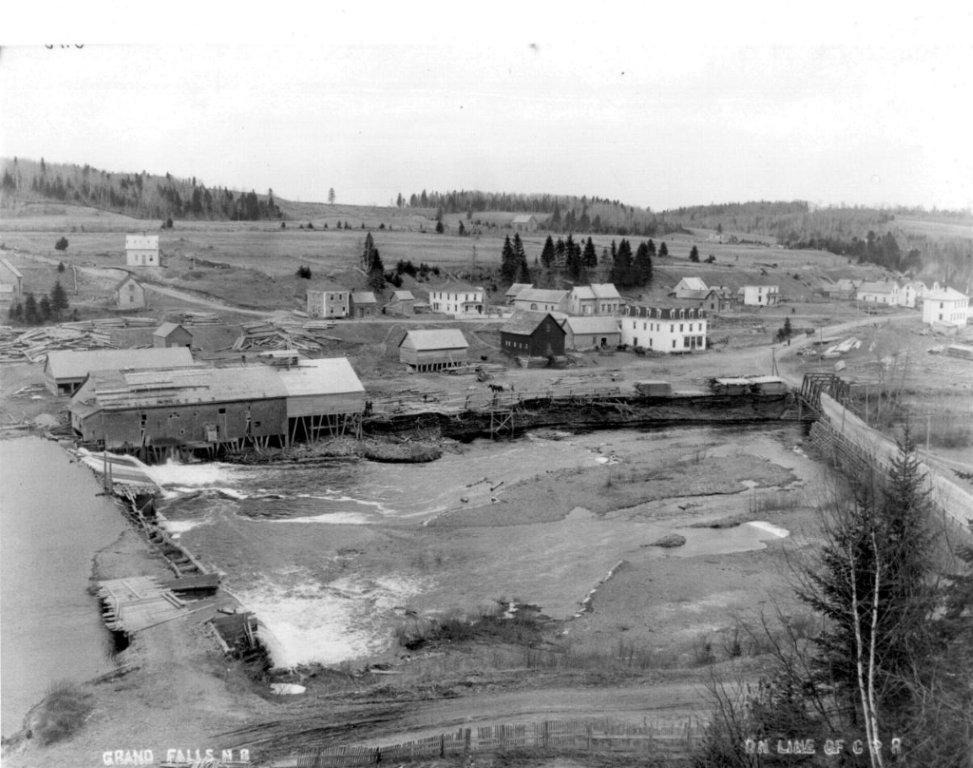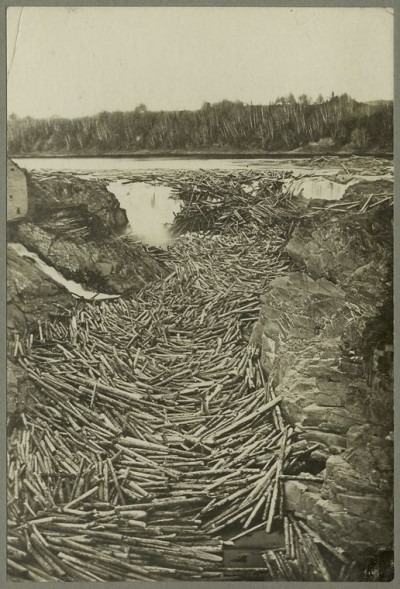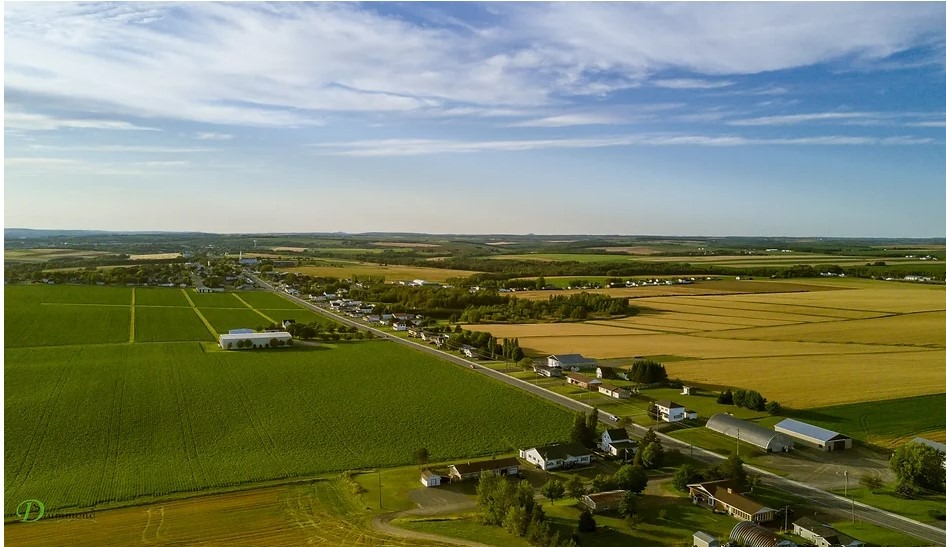
Farmer's Market / Museum / Burgess Mill / Agriculture

You are located at the Farmer's Market and the Historical Museum of the Regional Municipality of Grand Falls.
The Farmer's Market is located on a historic site in Grand Falls. In 1889, this plot of land housed the Burgess Mill, owned, and operated by James Burgess Sr. The mill was the largest employer in Grand Falls at the time, but ceased operations in 1929 after it burned down for the second time.
The land remained vacant until 1951 when Leon B. Rideout founded the Valley Co-Operative Limited so that potato growers could dispose of their surplus harvest. Leon, who had always had a keen interest in his community, saw the need for a second starch factory that would serve the producers of Notre-Dame-de-Lourdes, New Denmark, Drummond, Saint-André, and Grand Falls (Portage). This factory operated 24 hours a day, 365 days a year, employing up to 50 people at full capacity until new environmental laws forced its closure in 1974.
After this closure, the building remained vacant until Thomas Equipment took possession of it for several years.
Subsequently, it was returned to the city of Grand Falls and remained vacant until 2004. It was then that the municipality received financial assistance from the federal government, locally represented by MP Andy Savoy, to transform the building into a community cultural center that would house the Historical Museum and the Farmer's Market of Grand Falls.
Burgess Mill


Established in 1889, the Burgess sawmill was the largest employer of the time, employing over 200 people. It operated 24 hours a day from spring to fall and relied on winter and spring logging along the watershed of the Little River.
The company's horses were often seen hauling wood year-round on Broadway Boulevard to be dried on vacant land in town, and then hauled the dried wood to Burgess Siding along the CPR railway for shipment.
The Burgess company also managed two general stores to meet the needs of its employees, one on Broadway and the other near the mill on Little River.
In its August 28, 1929 edition, the Grand Falls Observer reported a very sad news that had long-term consequences for the residents of this small town at the top of the St. John River:
" Loss of $25,000 at Grand Falls on August 19th.-Fire caused the destruction of a large mill, two sheds, and a blacksmith shop belonging to the Burgess Lumbar Compagny here this afternoon in a fire that also endangered houses near the factory, which is across the Grand Falls bridge leading to Saint-André. "
There is still wood at the bottom of Little River, which explains why the water had a dark color. It should be noted that the pigment in the wood always gives this color to the water.
source : Grand Falls Yesterdays - Margaret Marceau

The lumber industry
Grand Falls had long been an important center for the lumber industry.
In the early days of settlement, mostly pine was cut. By the late 1700s, surveyors combed the inland forests all the way to the source of the St. John River to identify the largest and straightest trees for masts and ship timbers for His Majesty's fleet. By the end of the 19th century, almost all mature pine had been harvested and loggers were now cutting more spruce, with some cedar, birch and hemlock.
Much of the wood destined for export from the forests at the headwaters of the St. John River in New Brunswick and northern Maine passed through Grand Falls en route to its destination.
Men worked from sunrise to sunset, taking Sundays off. They stayed in the woods for 10 months a year, earning a salary of around $16 to $20 per month, including room and board. Their tasks consisted of cutting down trees with an axe and using horses for the transportation of the trees. The cutting season began in September or October, and the wood was floated down the river in April or May, sometimes June.
At that time, there were three companies handling the log drives. The log drivers traveled from the upper Saint John to Grand Falls, then from Grand Falls to Springhill, near Fredericton (about 10 miles/16 km). From there, the logs were delivered to their destination. The log drivers were paid between $1 and $1.50 per day.
When the water was too low and the logs got hung up, as was often the case, it sometimes took almost two years for the wood to reach its destination. During all this time, the contractor waited for his money.
source : History of Grand-Sault - Margaret Marceau
Agriculture
It is generally recognized that in the last century, forestry went hand in hand with agriculture, but generally at the expense of the latter sector. The sale of a lot of wood followed land clearing and, in addition, several farmers spent the winter in the woods as loggers.

The agriculture and agri-food sector are an important economic engine in the region due to the cultivation of potatoes and other agricultural products.
We are proud to be part of the 160 independent countries that grow potatoes, and industry worth over $106 billion.
Did you know that with the annual harvest, you could circle the earth six times on a four-lane highway???


To see the farms, take a drive either in the Saint-André or Drummond wards.
Saint-André is a dynamic, proud, and prosperous village.
At the heart of the New Brunswick potato country, you will discover vast fields adorned with beautiful flowers in the summer and a rich harvest in the fall.
The people are warm and very welcoming.
Potato farming is the dominant industry. It grows for seed, consumption, and processing.
During the summer season, our region is frequently visited by tourists. With the Trans-Canada Highway running through, two exits allow visitors to reach Saint-André directly.


In 1967, Drummond was incorporated.
Drummond presents itself as a haven of peace for its citizens. Without a doubt, it is pleasant for visitors to discover its natural splendors.
The picturesque side of the potato fields, the presence of vast open spaces, valleys, and the life of farmers make up a mosaic of nature and culture.
Visit the former town hall (1413, Tobique Road, Drummond) to discover a QR code that will allow you to discover the beauty of the landscapes.
Potatoes
Potatoes are generally planted from May 10th to June 10th and harvested from September 15th to October 15th. We have over 250 varieties of table and processing potatoes in the region.